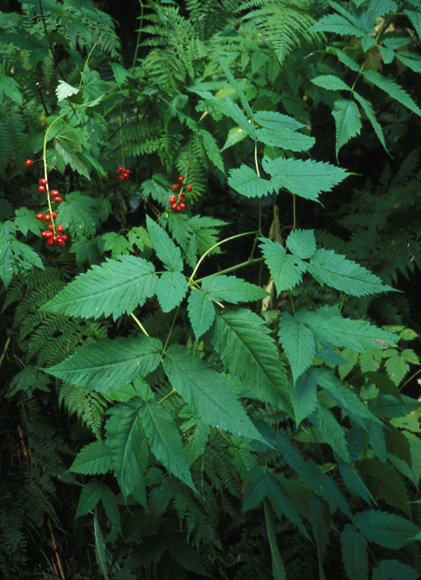
|
Poisonous Plants
|
| Poisonous plants may be an appropriate Halloween topic. Since
modern marketing has turned this holiday into a caricature featuring
costumes, candy, skeletons and pumpkins, why not inimical plants as
well? Most human poisoning victims are children, who ingested
household chemicals or medicines rather than plants. It's a good thing that
relatively few plants are poisonous to people, and most poisonous plants are
not deadly. Poisoning deaths and serious illnesses are usually caused
by mushrooms. Animals such as horses and cattle eat and are poisoned
by many plants; my present remarks apply solely to human poisoning. |
| Plant poisons are varied and complicated; many different kinds
exist. Alas, there is no simple way to tell which plants are poisonous.
Some poisons are concentrated only in certain plant parts, others are
throughout the plant. Some poisons are destroyed by cooking, others are
not. Some poisons disappear as the plant ages, some build-up as the plant
ages. Some taste foul, others are blandly flavored or even pleasant. |
| Most plant ingestions don't result in serious illness. Adults have
been poisoned by ingesting misidentified plants, by overdosing on
herbal remedies, by seeking a high from poisonous plants, by eating
contaminated foods, or by eating too much of plantfoods which are
poisonous only in quantity. People vary in susceptibility according to age
and health, not to mention differing allergic sensitivities. |
| Can you recognize these five deadly Pacific Northwest wild
plants? Baneberry (Actæa rubra) (PHOTO ABOVE), Foxglove
(Digitalis purpurea), Death Camas (Zigadenus
venosus), Poison Hemlock (Conium
maculatum) and Water Hemlock (Cicuta
Douglasii). In contrast, some wholly harmless or
only mildly toxic Pacific Northwest wild or cultivated plants tend to
generate concern but are not actually threats to worry about. At worst, the
unripe berries of some, eaten in quantity, may cause vomiting, diarrha,
etc. Plants in this category include Bittersweet Nightshade
(Solanum dulcamara), Holly (Ilex spp.), Poinsettia
(Euphorbia pulcherrima), and Snowberry (Symphoricarpos
albus). |
| There are also non-deadly yet seriously toxic cultivated plants
which ought not be planted where children play frequently. Examples
include Dumbcane (Dieffenbachia spp.), Goldenchain tree
(Laburnum spp.), Hellebore (Helleborus spp.), Lily-of-the-Valley (Convallaria
majalis), and Philodendron (Philodendron spp.). |
The best defense is to learn fully the attributes of common
plants, watch infants carefully, and --even if you never
eat plants outside or in your garden, avoid getting plant saps and juices on your skin. After
all, most plant poisonings are caused by skin contact, such as by
stinging nettles and poison oak. So become informed. Other than visiting
a library, a source of information is the Washington Poison Center
at Children's Hospital (526-2121).
|
(originally published in The Seattle Weekly, October 1996)
Back |
|
|

